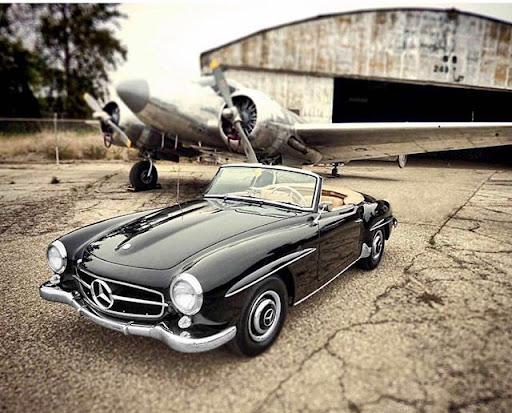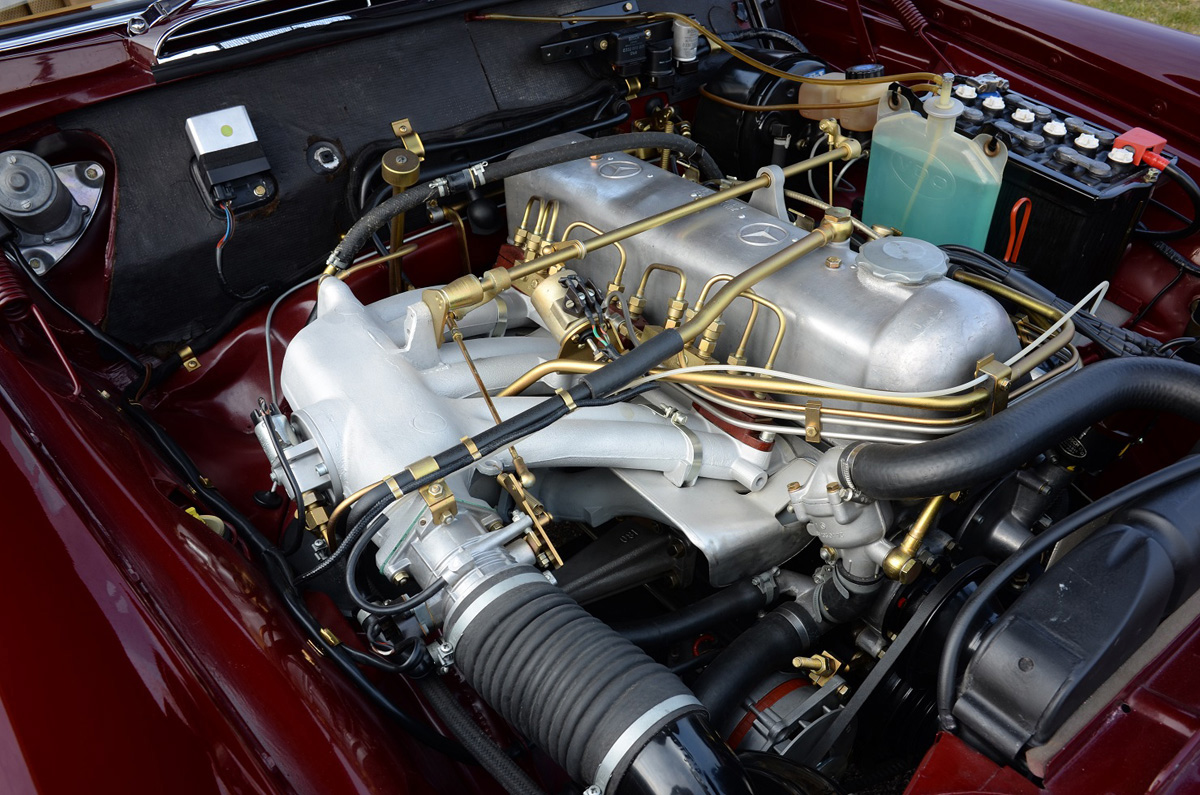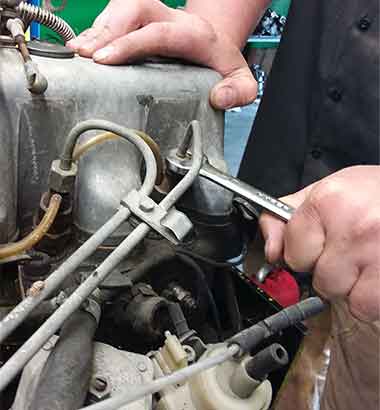Under Pressure: Mercedes Mechanical Fuel Injection
Posted by Cassy Leone on Nov 8th 2021
Under Pressure: Mercedes Mechanical Fuel Injection
By Cassy Leone
Complex mechanical devices have always interested me. When I was 17 years old, my friends offered to build me a computer for playing video games; I sold it after a few months and bought my first typewriter with the money. I fell in love with mechanical writing and after a few weeks, I started to buy up old typewriters I found in thrift stores and taught myself how to fix them. The tiny gears and levers, the smell of old steel, oil, and ink became a passion I still have to this day. My first and current typewriter is a Smith-Corona Sterling model made in 1940, and I know that with proper care, it will likely last me the rest of my life.
When I tell people I used to repair typewriters as a hobby, people claim that such a skill is a “lost art.” The same can easily be said about those who maintain the mechanical fuel injection systems seen on vintage Mercedes-Benz. People tend to look at the two devices with an air that is equal parts fascination and confusion. It is my hope with this article that I may demystify the technology somewhat, since the type of mechanical fuel injection seen on vintage Mercedes is the origin for the type we see in modern cars.

From The Air, To The Land
As discussed briefly in my article on Mercedes Aeronautics history, the concept of gasoline injection first found widespread use during the first and second world wars. While the technology was Swiss in origin, companies like Bosch made it possible for German aircraft to outperform many of their competition with the positive aspects of fuel injection. Carburetors rely on the suction of a Venturi tube to meter gasoline and air at the same time, and therefore are prone to malfunction when exposed to high G forces during aerial maneuvers. Gasoline injected engines offer smooth reliable performance no matter the conditions.
It was this massive advantage in reliability and performance that drove Mercedes to install a Gasoline Direct Injection system (or GDI for short) into their 1953 W196 Formula One car. That in turn spawned the legendary 1954 300 SLR which used the same fueling system as the W196. The sleek design and powerful engine inspired a car that really deserves an article all to itself… The 1954 W198 300SL.
The 300SL, also known as the “Gullwing”, was the brainchild of Max Hoffman who worked as a Mercedes-Benz importer and thought that a toned down version of the 300 SLR that focused both on comfort and performance would be suited to the tastes of affluent Americans in the postwar boom. To this end, it was first featured at the 1954 New York auto show along with its lower-priced stablemate, the W121 190SL. This is unique, because cars of this caliber would normally be introduced in the European market first, appearing at shows in Frankfurt and Geneva before making their way stateside. The first mass produced fuel injected car was built with Americans in mind, and for those that could afford it, there was no true substitute.

Like A Swiss Watch Dipped In Gasoline...
At this point, it would be good to give a basic overview of how these systems work, because unlike electronic fuel injection which uses a system of sensors to monitor fuel level and a single pump to send that fuel, the mechanical version uses a complex device called an injection pump that both monitors fuel and delivers it at the same time. Let's take this step by step:
1. Fuel is pulled from your tank using a small electric pump at the rear of the car and is pushed forward to the front of the car to the injection pump at the side of the engine.
2. As you press your foot down on the accelerator pedal, a lever rotates that spans the engine bay, crossing over the valve cover. It opens a butterfly valve near the air intake hose and allows your engine to suck in more air while also spinning up your injection pump getting it ready to spray more fuel.
3. Inside the injection pump, two small arms connected to a camshaft with weights on either end spin and begin to move outward from each other, allowing the pump to operate at a slower speed than the engine without the need for complex gear ratios. This allows your engine to maintain timing for correct fuel delivery. Those weights spread apart as they spin, and this moves a toothed “rack” forward and operates a series of plungers opened and closed by the spinning cam below them. The farther forward the rack is, the more fuel is being sent to the injectors on the other side of the engine.
4. As you let off the throttle, the arm connecting the pump to the air intake rotates the other way. The spinning weights inside the pump draw closer together and the rack gets pulled away, using fewer and fewer plungers until it settles back into needing only those for being at idle. A thermostat and solenoid work in tandem with this system when in cold temperatures or under heavy load (such as starting) to get the rack into a position where the pump can deliver the correct amount of fuel for the amount of air the engine is taking in.
The GDI system found on the 300SL was Mercedes’ first attempt with fuel injection, and differs from their second attempt in one key way. While both make use of an injection pump, the second generation fuel injection system found on cars such as the 230SL and 250SE use what is known as indirect fuel injection. This means that instead of the injectors spraying fuel straight into the combustion chamber of each individual piston, the high pressure fuel is shot around to the other side of the engine around the valve cover through two fuel lines that branch off into a T shape. (See image below). This fuel is divided into three lines by a distribution block on each side of the branch and is sprayed by an injector located above each cylinder in the intake manifold where it is pulled into the combustion chamber along with air by the downstroke of each piston.
Nice and simple, right?

Looking Back To Move Forward
While it’s true that Mercedes moved away from using Gasoline Direct Injection for the indirect system found on models like the W121 190SL and W128 220SE, recently auto makers have been using the electronic version of GDI more and more. It allows engines to run more efficiently and burn cleaner. Electronic fuel injection has, of course, long since supplanted the mechanical way of delivering fuel in the modern day and will get an article of its own soon. Diesel engines continue to use a mechanical system similar to the one described above due to the inherent properties of diesel fuel that make such a system more efficient for an engine of its type. While the mechanical gasoline injection pump has gone the way of the typewriter, there are still those that are dedicated to keeping them working smoothly. Just like buyers of these cars when new, their current owners know they have something special, something built to last. We at MBZ Parts are dedicated to keeping these machines on the road for years to come.



